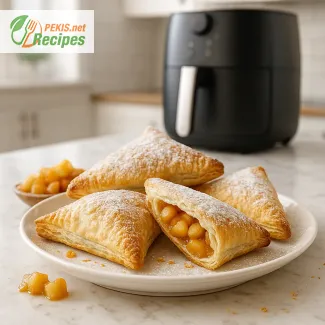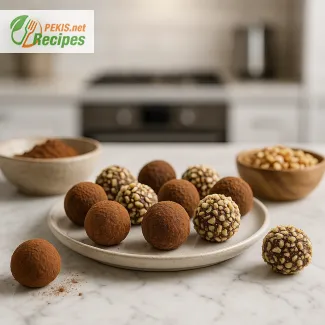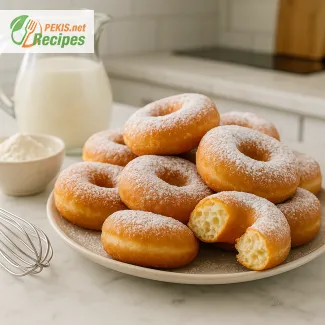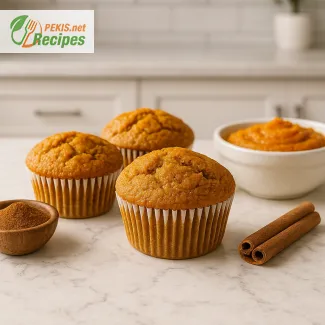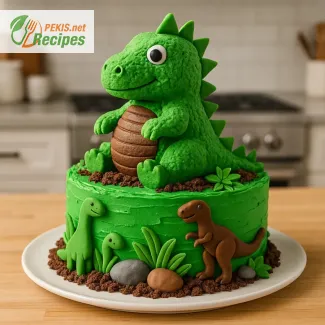
Turn Your Celebration into a Prehistoric Adventure with a Homemade Dinosaur Cake
The ultimate cake to thrill dinosaur-loving kids at birthdays
Planning a memorable birthday party for kids often means going beyond balloons and party hats—what truly sets the stage is a show-stopping cake. And when it comes to young dinosaur enthusiasts, nothing captures their imagination quite like a dinosaur cake. This delightful dessert isn’t just about flavor—it’s about creating a centerpiece that brings excitement, wonder, and plenty of “wow” moments. With a well-designed dinosaur cake, you’re not just baking a dessert; you’re building a fantasy.
A homemade dinosaur cake combines the nostalgic joy of classic baking with the thrill of Jurassic creativity. Whether you’re hosting a T-Rex–themed birthday or surprising your little paleontologist with something special, this cake is more than a treat—it’s an experience. From green buttercream-covered hills to chocolate sponge layers shaped into dinosaur tails or spikes, each bite tells a story. With the right ingredients and a bit of imaginative decoration, you can recreate a prehistoric world that delights kids and impresses parents alike.
Creating a dinosaur birthday cake at home gives you the freedom to personalize every detail. You can adapt the colors to match your child’s favorite dinosaur, include their name in icing, or design a miniature scene with edible rocks, trees, and footprints. While store-bought versions might look appealing, crafting your own allows for a flavor-packed, fresh-from-the-oven experience with fewer preservatives and more love. Plus, you’re in control of the texture—whether you want a soft vanilla base, a rich chocolate sponge, or a marbled combination of both.
The appeal of a dinosaur cake goes beyond its looks. Kids are naturally fascinated by dinosaurs—the mystery, the size, the adventure—and incorporating these elements into a cake makes the event feel grand and unforgettable. Even the simplest designs can be elevated with easy-to-use cookie cutters, fondant dinosaur toppers, or piped frosting scales. Parents looking for birthday cake ideas for boys and girls will appreciate that this theme is both gender-neutral and endlessly customizable.
Another advantage of making your own kids birthday cake is the bonding experience it offers. Involving your children in the baking process—letting them help mix the batter or choose the colors for the frosting—turns the preparation into a fun family activity. It encourages creativity, builds anticipation, and gives them a sense of pride when they see the final result.
While the visual aspect is key, don’t underestimate the importance of flavor. A great dinosaur cake should be as delicious as it is dramatic. You can opt for classic buttercream or go all out with layers of chocolate ganache, fruit jam, or cream cheese filling. Moist sponge layers, just the right level of sweetness, and a hint of vanilla or cocoa can elevate the cake from good to irresistible.
And let’s not forget the cake decorations. From edible eyes to fondant spikes, chocolate rocks, and crushed cookie dirt, there are countless ways to decorate your dinosaur cake to suit the age group and occasion. For a younger audience, cartoon-style dinosaurs in bright colors work well, while older kids might appreciate a more “realistic” Jurassic Park vibe. Cake toppers featuring a T-Rex, triceratops, or stegosaurus instantly transform your creation into a roaring success.
The beauty of this recipe is its flexibility. Whether you’re an experienced baker or a complete beginner, the steps can be adapted to match your skill level. You can use a simple rectangular base and build up with frosting and decorations, or go bold with shaped cake molds and 3D elements. Whatever your approach, the result is guaranteed to make an impression.
A dinosaur cake for kids is more than just a trend—it’s a timeless favorite that brings smiles to every celebration. With its playful design, rich flavors, and engaging theme, it serves as the highlight of any birthday table. In a world full of generic cakes, a homemade dinosaur-themed masterpiece stands out as a labor of love, creativity, and joy.
- Prepare the cake batter:
Preheat the oven to 175°C (350°F). Grease and flour two 20 cm (8 inch) round cake pans. In a medium bowl, sift together flour, baking powder, baking soda, and salt. - In a large mixing bowl, beat softened butter with granulated sugar until light and fluffy (about 3–4 minutes). Add eggs one at a time, beating well after each addition. Mix in vanilla extract.
- Gradually add the dry ingredients to the wet mixture, alternating with milk. Mix until smooth. For a chocolate layer, divide batter in two and mix cocoa powder into one half.
- Bake the cakes:
Pour the batters into the prepared pans. Bake for 30–35 minutes or until a toothpick inserted comes out clean. Let the cakes cool in pans for 10 minutes, then transfer to a wire rack to cool completely. - Prepare buttercream frosting:
In a bowl, beat butter until fluffy. Gradually add powdered sugar and beat until smooth. Mix in cream and a few drops of green food coloring to achieve a vibrant shade. Chill for 10 minutes before using. - Assemble the cake:
Level the cakes with a serrated knife. Stack with a thin layer of buttercream between them. Coat the entire cake with a smooth layer of green frosting. - Decorate:
Roll out fondant and cut out shapes: dinosaur spikes, leaves, rocks, and dinosaur figures. Use chocolate chips and cornstarch for detail. Arrange fondant pieces around the cake for a prehistoric landscape effect.
Creative Upgrades to the Classic Dinosaur Cake for a More Delicious Experience
Expert tips to elevate flavor, texture, and presentation of your homemade dinosaur cake
Perfecting the dinosaur cake recipe goes beyond following the instructions. Once you’ve mastered the traditional approach, experimenting with ingredients and techniques can open up a world of flavor and visual possibilities. From enhancing the sponge base to rethinking the decoration, there are many ways to improve the texture, taste, and overall presentation of this popular birthday treat.
Choosing richer flavors and textures for a more satisfying bite
One of the simplest yet most effective ways to enhance a dinosaur cake is by upgrading the flavor profile of the sponge. Instead of using plain vanilla or cocoa powder alone, try incorporating melted dark chocolate into the batter for a more intense chocolate taste and a moist texture. Adding a touch of espresso powder (around 1 g or ¼ tsp) enhances the cocoa notes without making the cake taste like coffee.
For a fruitier version, folding in freeze-dried raspberries or orange zest adds a refreshing twist and a subtle tartness that balances the sweetness of the frosting. Another option is to use buttermilk instead of regular milk, which creates a tender crumb and adds a pleasant tang that works especially well with rich buttercream.
To make the cake softer and lighter, try replacing a portion of the butter with sunflower oil. This not only improves moisture retention but also gives the cake a more delicate mouthfeel, especially if it's meant to be served the next day.
The advantages of homemade over store-bought dinosaur cakes
A homemade dinosaur cake offers far more than just a personal touch. You can avoid unnecessary preservatives and artificial flavors often found in mass-produced cakes. Baking at home also gives you complete control over sugar content, ingredient quality, and customization.
For example, many commercial cakes rely heavily on synthetic food colorings. At home, you can opt for natural alternatives such as matcha powder for green hues, beet juice for pink, or turmeric for a warm yellow tone. These ingredients not only color the frosting naturally but also introduce subtle earthy undertones that make the cake more interesting.
Moreover, crafting the cake yourself allows you to adjust sweetness levels, especially in the buttercream. Reducing powdered sugar by just 10% can result in a less cloying and more refined flavor.
Common mistakes and how to avoid them
One of the most frequent errors in baking a dinosaur cake is overbaking the sponge, which leads to dryness and a crumbly texture. Always check doneness a few minutes before the suggested baking time by inserting a toothpick in the center—if it comes out with a few moist crumbs, it’s ready.
Another issue arises when the fondant decorations crack or dry out. To prevent this, make sure to knead fondant well before shaping and keep unused pieces covered with plastic wrap. Adding a tiny amount of vegetable shortening during kneading also helps keep it pliable.
Using too much food coloring can overpower the palate and cause bitterness. Gel-based food coloring is more concentrated and should be used sparingly—just a small amount can deliver vibrant results without affecting taste.
Healthier ingredient swaps and their impact
For those looking to make the dinosaur cake healthier, several ingredient swaps can be made without sacrificing flavor. Use whole wheat pastry flour in place of regular flour for added fiber and a slightly nutty undertone. Swap refined sugar for coconut sugar or a blend of maple syrup and date paste to reduce the glycemic index and add caramel-like depth.
Instead of using traditional buttercream made solely from butter and sugar, you can try a Greek yogurt frosting. When combined with a small amount of cream cheese and honey, it yields a creamy texture and tangy sweetness with fewer calories and more protein.
Adding chia seeds or ground flaxseed to the batter introduces omega-3 fatty acids and fiber, making the cake slightly denser but more nutritious. If moisture is needed, a tablespoon of unsweetened applesauce or mashed banana can enhance moisture content while contributing natural sweetness.
Decorating tips to boost visual appeal and ease of preparation
The magic of a dinosaur cake often lies in its visual storytelling. But intricate fondant designs can be time-consuming and intimidating for beginners. To simplify, use cookie cutters to shape fondant pieces like dinosaur footprints, leaves, and rocks.
For a quicker alternative, pipe different textures of green buttercream using various nozzles—this creates the illusion of foliage and terrain without fondant. Incorporating edible chocolate rocks or cereal-based decorations adds a fun crunchy texture and elevates the prehistoric theme.
If making a 3D dino topper feels too advanced, bake a sheet cake and use a printed stencil to cut out a dinosaur silhouette from the sponge itself, then decorate it with colorful icing. This method retains the charm of the dinosaur theme while being accessible to novice bakers.
Customizing based on dietary preferences or themes
One of the most powerful aspects of this cake is its versatility. By simply tweaking the flavor or decorations, it can be adapted to other themes or dietary preferences. For instance, transforming the base into a carrot cake or red velvet version makes it suitable for older children or adults who still appreciate the dinosaur motif.
For vegan versions, substitute eggs with aquafaba or chia eggs, and use plant-based milk and butter alternatives. Frosting can be made from whipped coconut cream or vegan margarine, both of which hold up well when piped.
Even the color palette can be personalized—try pastel greens and purples for a more whimsical appearance, or earthy tones and textures for a “realistic” Jurassic effect. The use of natural ingredients for coloring and theming ensures the cake looks stunning and tastes even better.
Why every detail matters
In the end, a great dinosaur cake is not only about the recipe—it’s about the story you build through its flavors, textures, and visuals. Every change or enhancement, from using high-quality chocolate to incorporating homemade fillings or creative decorations, influences the final experience. Taking the time to tweak, taste, and test your version ensures the result isn’t just impressive—it’s unforgettable.
Allergens and gluten content:
Contains: gluten (flour), eggs, dairy (butter, milk, cream), possible soy traces (chocolate chips).
Substitution tips:
- For a gluten-free version, replace all-purpose flour with gluten-free flour blend (same quantity), and add ½ tsp xanthan gum.
- For dairy-free, use plant-based butter, almond or oat milk, and coconut cream.
- For egg-free, substitute each egg with 60 g (¼ cup) applesauce or mashed banana.
- Vitamin A: 290 µg – supports vision and immune function
- Calcium: 80 mg – essential for bone health
- Iron: 2 mg – supports oxygen transport
- Magnesium: 22 mg – aids muscle and nerve function
- Potassium: 120 mg – regulates fluid balance
- Cocoa polyphenols: approx. 150 mg – reduce oxidative stress
- Vitamin E (from vegetable oil): 1.5 mg – protects cells from damage
- Flavonoids (from dark chocolate chips): 80 mg – support heart health and circulation
